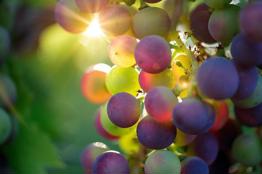Halachic principles of bi'ur for shemitah produce

What is the obligation of bi'ur and how is the bi'ur time determined for different types of produce? Chapter 24 of the Consumer's Guide to Shemitah.
A. What is bi'ur?
- The Torah states (Vayikra 25:7): "And your cattle and beasts in your land may eat all its yield." Chazal learn from here: "As long as animals eat this type of produce in the field, you can eat it at home. Once it is finished for animals in the field, you must rid (leva'er) the type of produce from the home."[1]
- Once the time comes for the mitzvah of bi'ur, one must remove the shemitah produce stored at home from that particular type of food and declare it ownerless for the poor and anyone else, as explained below.[2]
B. What does the obligation of bi'ur apply to?
- Seeds and peels that are designated for human or animal consumption have shemitah sanctity and are subject to bi'ur.[3]
- Bi'ur does not apply to produce without shemitah sanctity, such as those growing on land belonging to a non-Jew[4] and produce growing on land sold through heter mechirah.
- Even those who are stringent about handling produce that grew on land belonging to non-Jews as sacred[5] need not perform bi'ur with the produce.[6]
- Bi'ur does not apply to ownerless produce or produce under the auspices of otzar beit din.[7] However, bi'ur does apply to produce taken from hefker or from otzar beit din before that time. That is, if one bought a bottle of otzar beit din grape juice before the bi'ur deadline, bi'ur would apply to the grape juice at its bi'ur time.
- Bi'ur does not apply to fruit still hanging on trees.[8]
- Bi'ur applies only to plants whose fruits are not left growing from year to year. Fruit that does not disappear from the field (such as perennial bulbs) are not obligated in bi'ur.[9]
- Shemitah produce that is no longer available in the field only after the appearance of fruit in the eight year (such as pecans and mint) are exempt from bi'ur.[10] Similarly, in instances where there are fruits or vegetables of the same type growing in places without shemitah sanctity (such as fields of non-Jews) or in olei Mitzrayim territory—bi'ur is not required.[11]
- Just as there is an obligation of bi'ur for shemitah produce, there is also an obligation to perform bi'ur on sacred shemitah money; coins used to purchase sacred produce.[12]
- If one cooks or pickles shemitah produce with non-sacred foods, but the shemitah produce flavored these foods, the non-sacred foods also become obligated in bi'ur at the time of bi'ur for their sacred shemitah [13]
- Shemitah produce mixed with non-sacred produce of the same type (such as those that grew in land sold through heter mechirah)—the entire mixture is subject to bi'ur, even if the amount of shemitah produce mixed in is miniscule.[14]
C. Determining the bi'ur time
- The obligation of bi'ur varies for each type of produce according to its season of growth and time when wild animals finish eating it.[15] The entire State of Israel is considered one region vis-à-vis bi'ur times. [16]
- Chazal determined bi'ur times for several crops. These times are given when it is not known when they are no longer found in the field.[17] For these times in our days, see Appendices A–D.
- For fruits with two fruiting seasons each year (such as lemons), the time of bi'ur is when the fruit is no longer available on the tree after the second fruiting season.[18] For fruits with different varieties, the bi'ur time is determined by the variety that is latest in ripening (for instance: for oranges, bi'ur time is determined by Valencia oranges, which are no longer available only during spring of the eighth year.)
- The bi'ur time for etrogim is the eighth year, when the etrogim that grew during the shemitah year are no longer on the tree.[19]
- If a specific type of produce is no longer available to wild animals in the field but is still growing in a private, gated yard,[20] bi'ur nevertheless applies. The same is true if a specific type of produce is no longer available in the field of a landowner, but is in irrigated fields.[21]
- If a specific type of produce grows exclusively through artificial means and none grow through natural means, the bi'ur time is when there are no more artificially grown produce of that type.[22]
- For this reason, the bi'ur time for vegetables growing in hothouses or nethouses[23] are determined based on the following criteria:
- If most vegetables of that type grow in open fields, the bi'ur time follows the time for the fields.
- If vegetables are mostly grown in hothouses, and the hothouse is not locked (entry is possible at any time), the bi'ur time is when there are no more vegetables of that type left in the hothouse.
- If vegetables are mostly grown in hothouses, and the hothouse is locked, the bi'ur time is when there are no more vegetables of that type left in the fields.
- If all cultivation takes place in hothouses, the bi'ur time is when there are no vegetables left in the hothouse.[24]
- Peels and seeds generally used as animal fodder (or another use that shemitah sanctity applies to) that are stored separately from fruit (such as orange peels meant for cow sheds): bi'ur time is determined by the time the peels and seeds would rot in the field. If these peels and seeds are meant for human consumption (such as candied orange peels) or if they are preserved together with their fruit, the bi'ur time is determined according to the bi'ur time of the fruit itself.[25]
[1] Rambam 7:1 based on Torat Kohanim, Behar 1:8; Rashi (Yoma 83a, s.v. tevel) maintains that bi'ur during shemitah is a biblical injunction. Ramban (Vayikra 25:7), however, holds that bi'ur is rabbinic and part of the mitzvah of hefker. See Shabbat Ha'aretz 7:3 §2 and n. 19.
[2] One rationale for the mitzvah of bi'ur is to highlight our lack ownership of the land. I can eat the produce in my home only as long as everyone else still can—that is, when it is still available in the field and accessible to all. The moment it is no longer in the field, and the public cannot partake of the produce, neither can I (the produce owner). It is also possible that the purpose of the bi'ur obligation is to get us to share the produce in our ownership, since bi'ur applies only to large quantities (more than three meals; see below). This way, before the bi'ur deadline, people give out their extra produce to neighbors and friends. This is similar to the laws governing ma'aser sheni, where the produce owner should invite many guests to his meal. The same is the case with the mitzvah to eat 40 loaves of bread at the korban todah meal in Jerusalem in one day, which forces the one bringing the sacrifice to invite many people to the festive meal to help finish the food (so it will no have the status of notar, leftover; see Ha'amek Davar, Vayikra 7:13).
[3] See Mishnah 7:3 that peels have sanctity. Rambam (7:15) writes that peels and seeds are not subject to bi'ur. Pe'at Hashulchan 27:36 explains that since they are edible only in extenuating circumstances, bi'ur does not apply. For seeds and peels that are meant for human and animal consumption, however, even Rambam would agree that the bi'ur obligation applies. See also Shabbat Ha'artez 7:15, n. 3.
[4] See Shabbat Ha'aretz 4:29 §2.2.
[5] Ibid., §2.1.
[6] Mabit (I §21, s.v. katav, §336, s.v. ve'im; III §45) cites Rabeinu Shimshon Hazaken, that even if there is shemitah sanctity in produce grown by non-Jews, it nevertheless is not obligated in bi'ur. Since the produce was grown by a non-Jew, who is not obligated in bi'ur, anyone buying this produce would not be obligated by it either. See also Shabbat Ha'aretz 7:1 §6; 4:29 nn. 9–10.
Rashas (6:1, 9:8, s.v. ule'inyan bi'uran) is stringent, maintaining that bi'ur applies also to the produce of non-Jews. With regard to this opinion, Ridbaz writes (qtd. in Sefer Hashemitah p. 46, n. 6) that if one purchased produce from a non-Jew after the bi'ur time, preferably one should declare the produce ownerless at the time of purchase. Bedi'avad, if one failed to didn't declare, the produce is permitted. While some are stringent (Shelah) that there is no way to rectify a non-Jew's produce after the bi'ur deadline, but this approach is not accepted by mainstream posekim. See Shabbat Ha'aretz 7:1 §6 and n. 24.
[7] Chazon Ish §11:7. See also Shabbat Ha'aretz 7:6 §2 about otzar beit din. The rationale for this is that bi'ur involves rendering one's produce ownerless; otzar beit din produce, however, belongs to the public, so it is not subject to the bi'ur obligation. See Shabbat Ha'aretz 7:3 §2.4 on hefker. According to Rashas (9:3, s.v. ve'ani omer), it is imperative to perform bi'ur on produce owned by the otzar beit din. Rabbi Eliahu rules accordingly. He adds that since Rambam does not mention otzar beit din, one should be stringent and perform bi'ur on this produce as well.
[8] Chazon Ish §11:7 s.v. im.
[9] The definition given by the Mishnah (7:1) is eino mitkayem ba'aretz, "cannot be left growing in the soil." Rambam (7:13) lists plants used for dyes, which can be left growing in the soil (pu'ah and richfah; madder, which produces a red dye, and dyer's rocket, respectively), thus bi'ur does not apply to them. The vast majority of fruits (including citrus, which often hang on trees for months at a time), vegetables, and bushes are not included in the definition of "left growing in the soil," so bi'ur would apply to them. The posekim are divided on the definition of the term kalah lechayah min hasadeh, "finished for the wild animal from the field." See Shabbat Ha'aretz 7:1 §1.
[10] Shabbat Ha'aretz 7:1 §5. Since produce is still available in the field (bi'ur does not apply when there are new fruits on the tree). See Beit Ridbaz (§8:13; gloss on Mishmeret Habayit, p. 22a §30) who argues that the bi'ur obligation does not apply to etrogim, since there are always fruits hanging on etrog trees all year long (noting that individual etrogim can continue growing on trees for up to three years). He instructs posting guards to ensure that non-Jews do not pick onld etrogim from the trees, so there will always be fruit hanging on them. Beit Ridbaz believes that in Chazal's time, all etrogim were harvested when ripe, so they indeed would not be available to animals in the field. In practice, this approach is not accepted for etrogim or other citrus trees, which are subject to bi'ur. Rabbi Auerbach (Kerem Tziyon chap. 17, Gidulei Tziyon §1 and Minchat Shlomo §51:15) rules accordingly. Rabbi Yisraeli maintains that even if fruit is still hanging on orlah trees, all the other trees are still exempt from bi'ur. Some are stringent, however: Chazon Ish (§15:3, s.v. venireh, ובמש"כ) states that only produce with shemitah sanctity still hanging on trees or in fields can exempt similar produce from bi'ur. This is implied by Rashas 7:2, s.v. vekotzeh. See Shabbat Ha'aretz 7:1 §5, n. 16.
[11] See Shabbat Ha'aretz 7:1 §5, nn. 18–19.
[13] Mikdash David 59:2, s.v. amrinan hakovesh; the discussion on whether pickling imparts flavor like cooking (kavush kemevushal) vis-à-vis shemitah laws begins in Mishnah 9:5, on the bi'ur time for a barrel where three types of vegetables are pickled together. There is also a discussion in Mishnah 7:7 on pickling rose petals in oil. According to Rivmatz 7:7, it is possible to be lenient if the shevi'it produce is removed from the food before its bi'ur time and only its flavor remains. See Shabbat Ha'aretz 7:6 §3; 7:21.
[14] Rambam (7:22) maintains that with regard to shemitah laws, min be-mino (similar species) imparts shemitah status even with the smallest amount; that is, it is not nullified even in a ratio of 1:1,000. In contrast, min be-sheino mino (dissimilar species) are nullified when not imparting flavor, which is a ratio of 1:60. That is, every mixture of similar species will become sacred in its entirety. Ran (Nedarim 58a, s.v. aval) states that only if the foods were mixed prior to the time of bi'ur the entire mixture becomes obligated in bi'ur, even if a miniscule bit or shemitah food is in the mixture (assur bekolshehu). This is because it is a mixture that can be permissible (davar sheyeish lo metirim), governed by the rule that it is not nullified even in a 1:1,000 ratio. In this case, any regular Jew can eat the mixture even if it has sacred shemitah status. However, if the shevi'it produce is mixed in after the bi'ur time, it can be nullified in ratio of 1:60 if it does not impart flavor (batel benoten ta'am); now the mixture includes food that cannot become permissible (the bi'ur time passed and the food is now forbidden). See Shabbat Ha'aretz 7:22 §2.3.
[16] During the times of Chazal, some divided the Land of Israel into three separated bi'ur regions while others divided it into nine: Mishnah 9:2–3; Rambam 7:9–12. However, Shenat Hasheva (19:13) notes that today the entire State of Israel has that same bi'ur time, since we don't know with certainty what the various boundaries are between regions. Furthermore, it is very common for produce to be transported in large quantities from place to place (the halachah is that if produce is transported from a place where the crop is no longer available to a place where it is available, or vice-versa, bi'ur applies to the crop in both places for that particular crop, according to the earliest bi'ur time; see Rambam 7:12 and Chochmat Adam, Sha'arei Tzedek 19:9. Rabbi Eliahu adds that today the nature of plant growth is also similar in all regions. See also Shabbat Ha'aretz 7:10 §3.
[17] Rambam 7:11. Mishnat Yosef (III §36, end) and Rabbi Neria Gutel (Barkai V, pp. 103–128) write that today grapes are no longer in the vineyards by Tu Bishevat, so we should perform bi'ur due to doubt at this time. Rabbi Yisraeli (editor's note, Barkai V, pp. 119–112) disagrees, arguing that bi'ur should be performed for grapes only by Pesach of the eighth year (as stated by Rambam 7:11). The index for bi'ur, in his opinion, is the crop's ability to remain in the field, had it not been harvested by people or eaten by animals (§8, ibid.); alternatively, grapes can be stored until Pesach (§13, ibid). See Shabbat Ha'aretz 7:11 §§1–2; Hama'ayan 21:4 Tammuz 5741, pp. 1–3.
[18] Mishnah, Shevi'it 9:4; Rambam 7:5. See also Rabbi Auerbach: Kerem Tziyon, ch. 17, Gidulei Tziyon §1; Minchat Shlomo 51:15. Chiddushim Ubiurim (II 6:4, s.v. shevi'it), is stringent and writes that if the second yield did not ripen when the fruits of the first yield are finished, bi'ur should be performed on the first yield when their time has come. See also Shabbat Ha'aretz 7:5 §1.
[19] Rabbi Kook (Shabbat Ha'aretz, Kuntres Acharon §24; Sefer Hashemitah, p. 45 §9 and n. 4) maintains that etrogim are like trees that yield twice a year. Kerem Tziyon, 17:14, writes that etrogim are exempt from bi'ur since they can remain on trees for two to three years before harvest prior to Sukkot. See also Shabbat Ha'aretz 4:12 §§6–8 on shemitah sanctity for etrogim. Rabbi Eliahu adds that bi'ur does not apply to the Yemenite etrog, since there are etrogim on the tree all year round. However, bi'ur does apply to other etrog varieties, as these trees generally are bare at a certain point. In practice, most etrog growers remove the etrogim remaining on the tree during winter.
[20] Mishnah 9:4 states: "One may eat by virtue of similar produce regarded as ownerless [still found in the field], but not when it was stored." See Shabbat Ha'aretz 7:4 §2.
[21] Tosefta 7:12 based on the Gra's gloss §20: "One may not eat by virtue of vegetables growing in irrigated land (beit shelachin), since the produce is never finished due to [ongoing] irrigation." See Shabbat Ha'aretz 7:11 §5.
[22] Shabbat Ha'aretz, ibid.
[23] In hothouses, it is possible to extend the crop growing seasons, and therefore to extend the time the vegetables are still available. For this reason, bi'ur time would also be delayed.
[24] Mishnat Yosef III §35. See Shabbat Ha'aretz, ibid.




